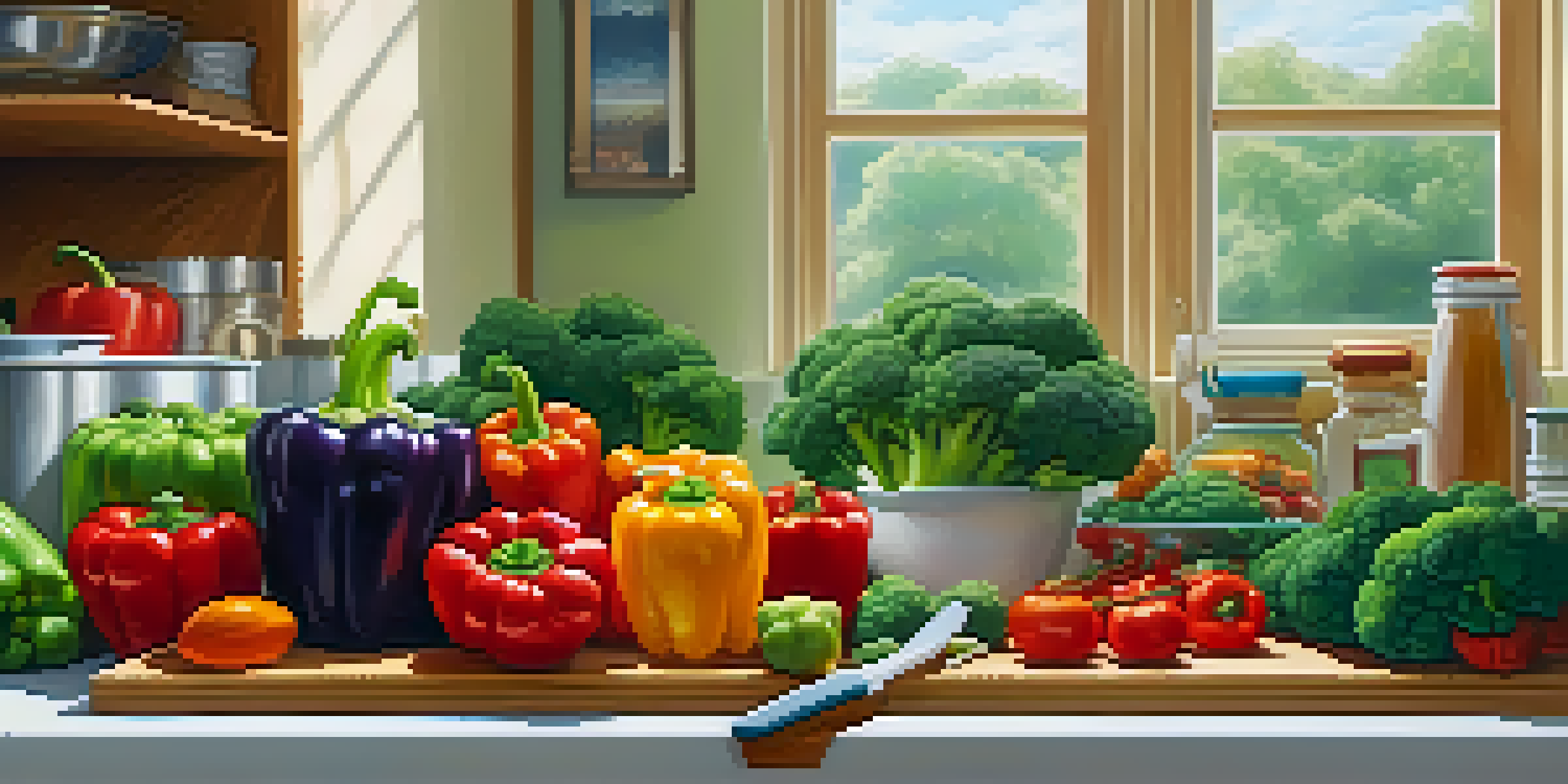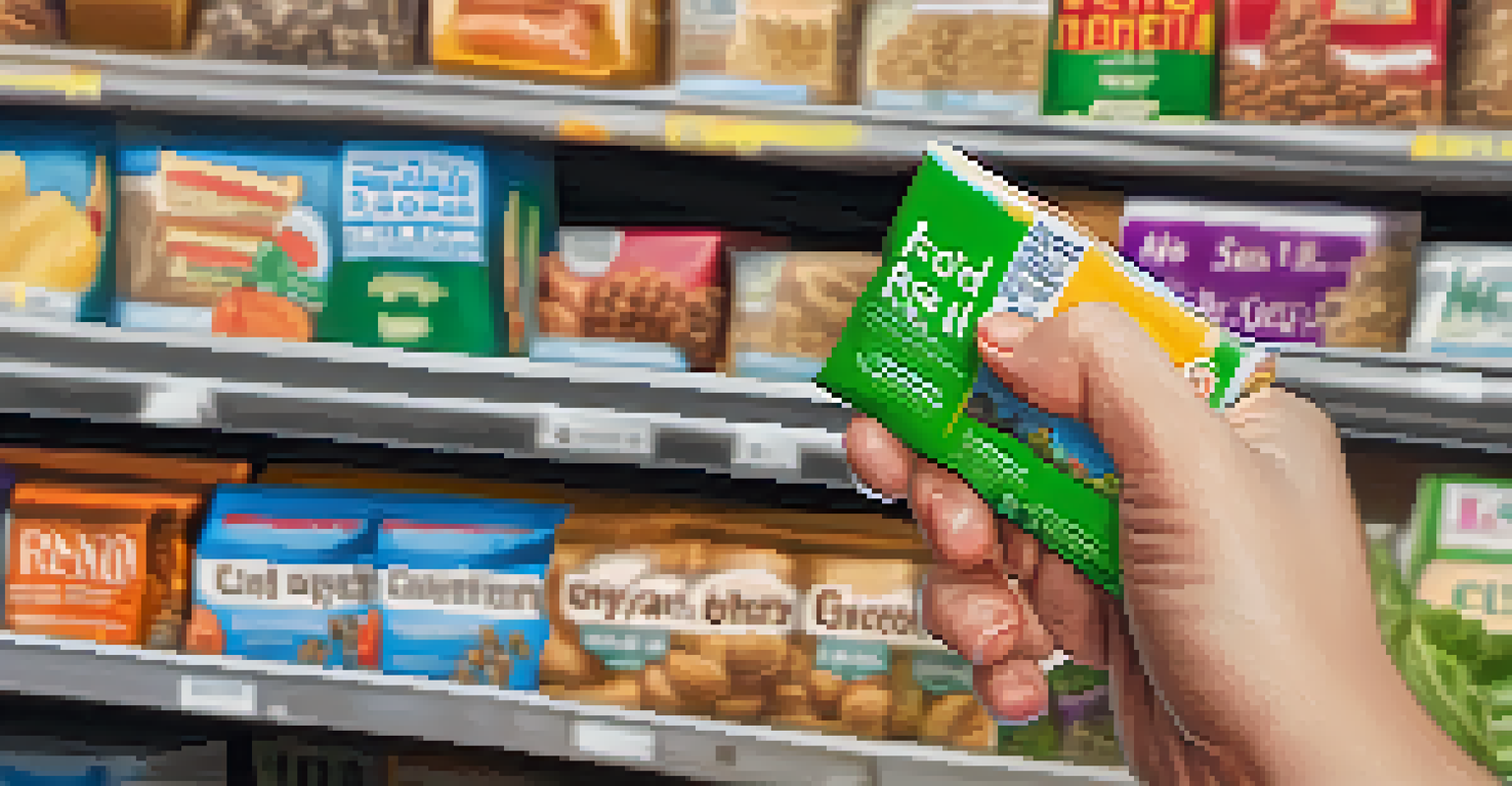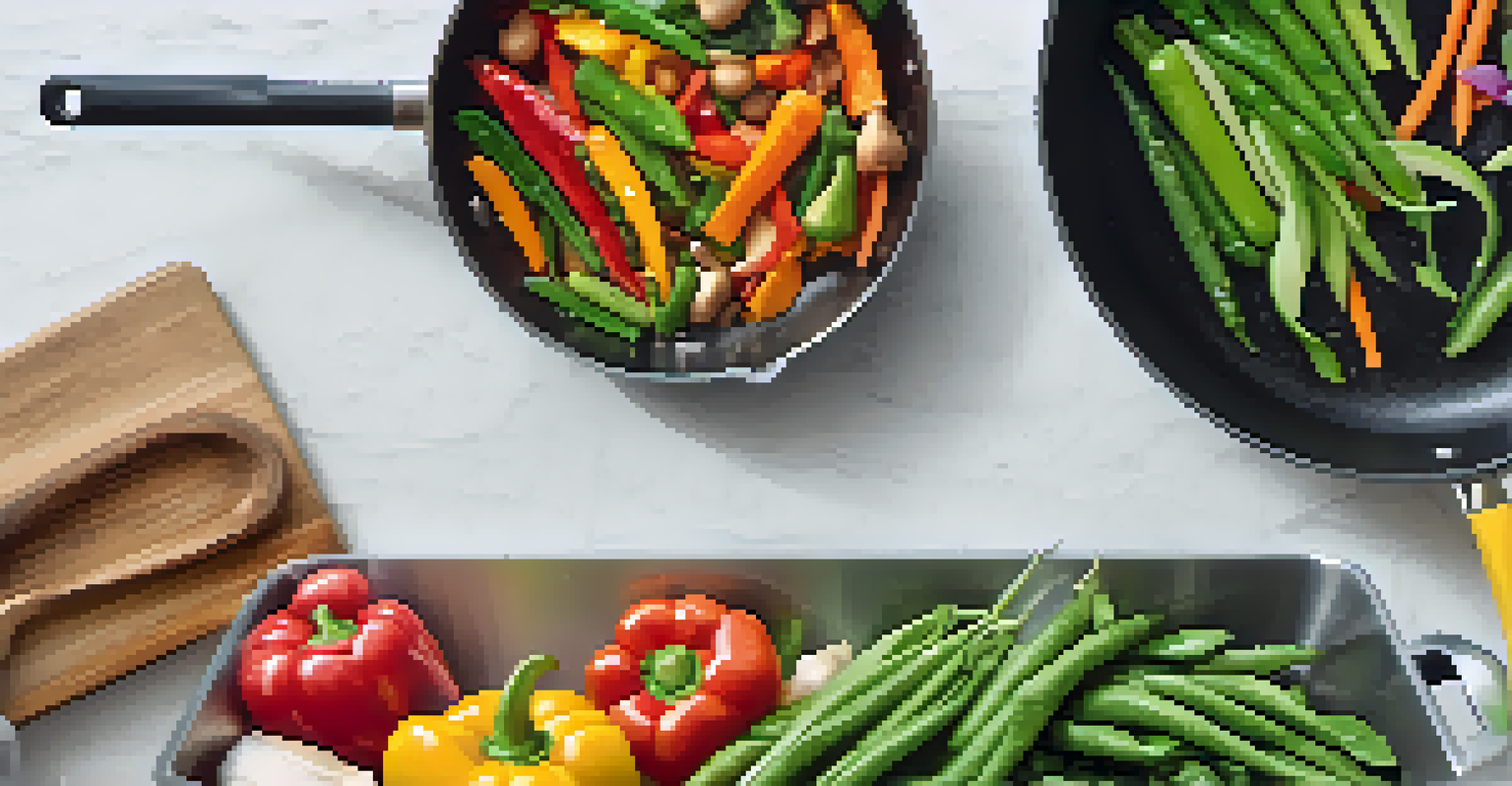Understanding Cross-Contamination in Vegan Cooking

What is Cross-Contamination and Why It Matters
Cross-contamination occurs when harmful substances or allergens are transferred from one food item to another. For vegan cooking, this can mean the unintentional mixing of non-vegan ingredients or allergens that can affect those with sensitivities. Understanding this concept is crucial for maintaining the integrity of your vegan meals.
Food safety is not just a priority; it’s a responsibility we all share in the kitchen.
Imagine you’re preparing a delicious vegan stir-fry, but you’ve just used a cutting board that had raw chicken on it. If you don’t clean it properly, you could introduce harmful bacteria into your meal, compromising both safety and flavor. This scenario emphasizes the importance of clean cooking practices, even in a plant-based kitchen.
To keep your meals safe and delicious, it’s essential to recognize potential risks and implement strategies to minimize them. By doing so, you ensure that your vegan cooking is not only healthy but also free from contamination-related concerns.
Common Sources of Cross-Contamination in the Kitchen
In any kitchen, cross-contamination can stem from various sources. One of the most common culprits is shared utensils, cutting boards, and kitchen appliances that have been used for both vegan and non-vegan foods. Even a quick rinse might not be enough to eliminate all traces of meat or dairy.

For instance, using the same knife to chop vegetables after slicing cheese can inadvertently transfer dairy residues to your veggies. This is particularly important for those who are allergic to dairy or following strict vegan diets. It’s a subtle reminder that even small oversights can lead to significant issues.
Preventing Cross-Contamination
Implementing best practices, such as using separate utensils and thorough cleaning, is essential to avoid cross-contamination in vegan cooking.
Additionally, cross-contamination can occur during grocery shopping or food storage. If you don’t separate vegan and non-vegan products in your cart or fridge, you may inadvertently mix them, leading to potential contamination in your meals. Being mindful of these sources is the first step towards a safer cooking environment.
Best Practices for Preventing Cross-Contamination
Implementing best practices in the kitchen can significantly reduce the risk of cross-contamination. Start by designating specific utensils and cutting boards solely for vegan food preparation. This simple step can help keep your cooking space organized and safe.
The kitchen is a place of creativity, but it should also be a sanctuary for health and safety.
Another effective strategy is to practice good cleaning habits. Always wash your hands, surfaces, and tools thoroughly before and after handling different types of food. Using hot, soapy water or a vinegar solution can help kill any lingering bacteria or allergens.
Lastly, consider organizing your pantry and refrigerator so that vegan products are stored separately from non-vegan items. Clear labeling and designated spaces can help prevent accidental mix-ups, ensuring that your vegan cooking remains safe and enjoyable.
Understanding Food Labels and Ingredients
Reading food labels is crucial for avoiding cross-contamination in vegan cooking. Many packaged foods may contain traces of animal products, even if they don’t directly list them as ingredients. Look for phrases like 'may contain' or 'processed in a facility that processes milk' to be cautious.
For example, a seemingly innocent snack like granola bars might contain honey or be produced in a facility that processes nuts and dairy. By being vigilant in reading labels, you can make informed choices that align with your vegan lifestyle.
Understanding Food Labels
Reading food labels carefully helps identify potential allergens and non-vegan ingredients, ensuring safe choices aligned with a vegan lifestyle.
Additionally, familiarize yourself with common non-vegan ingredients that might sneak into your meals, such as gelatin or certain colorings. This knowledge empowers you to select products that fit your dietary preferences and helps you avoid potential cross-contamination.
Cross-Contamination and Allergens: A Special Concern
Cross-contamination becomes particularly critical when cooking for individuals with food allergies. Even minute traces of allergens can trigger severe reactions, making it essential to maintain strict separation between vegan foods and allergenic ingredients. For instance, if someone is allergic to nuts, using the same utensils for nut-based vegan dishes can pose serious risks.
It’s a good practice to have a separate set of utensils and cookware for allergen-free cooking. This not only protects those with allergies but also gives peace of mind to anyone consuming your food. Being proactive in these situations shows that you prioritize the health and safety of your loved ones.
Moreover, when dining out or buying pre-prepared vegan meals, always inquire about cross-contamination policies. Understanding how establishments handle allergenic foods can help you make safer choices while enjoying delicious vegan cuisine.
The Role of Cooking Methods in Preventing Contamination
The cooking methods you choose can also impact the risk of cross-contamination. For example, grilling vegetables on the same grill as meat can lead to grease and flavor transfer. Opting for different cooking appliances or using foil can help keep your vegan meals pure and flavorful.
Steaming, baking, or stir-frying in a dedicated pan can create a safer cooking environment. These methods not only preserve the integrity of your vegan ingredients but also enhance their flavors without the risk of cross-contamination.
Cooking Methods Matter
Choosing the right cooking methods, like steaming or using dedicated pans, can significantly reduce the risk of cross-contamination in your meals.
Additionally, consider batch cooking and meal prep as ways to maintain a clean cooking space. By preparing your meals in advance, you can minimize the chances of mixing ingredients and ensure that everything remains vegan and uncontaminated.
Creating a Safe and Enjoyable Vegan Cooking Environment
Creating a safe cooking space is all about organization and mindfulness. Begin by decluttering your kitchen, ensuring that only vegan-friendly items occupy your counters and cabinets. A tidy space makes it easier to focus on your cooking without distractions.
Involving everyone in the cooking process can also foster a sense of community and awareness about cross-contamination. Whether cooking with family or friends, sharing knowledge about safe practices can enhance the overall experience and make it more enjoyable.

Lastly, always keep an open line of communication about dietary preferences and restrictions. This transparency not only helps prevent cross-contamination but also builds trust and consideration in your cooking endeavors. Remember, a safe kitchen is a happy kitchen!